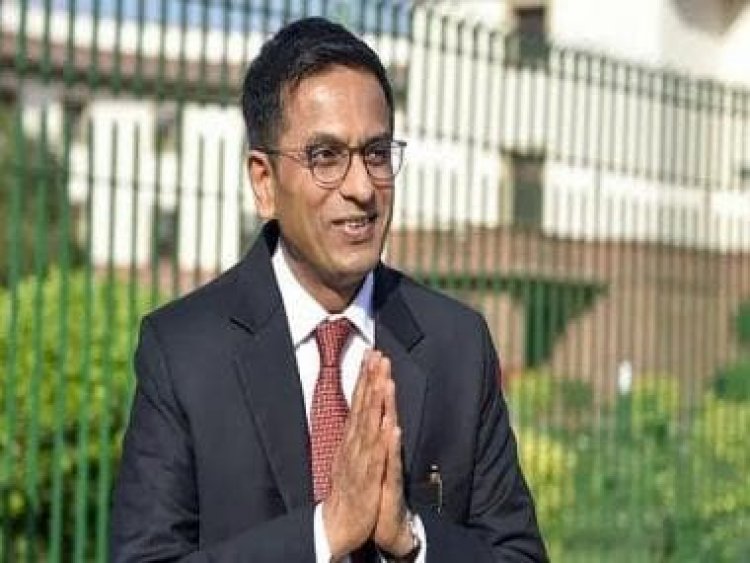Why Justice DY Chandrachud's call to inculcate feminist thinking in Indian legal system is timely
Why Justice DY Chandrachud's call to inculcate feminist thinking in Indian legal system is timely

“Women have served all these centuries as looking glasses possessing the magic and delicious power of reflecting the figure of man at twice its natural size.”
-Virginia Woolf, A Room of One’s Own
Recently, the Chief Justice of India-designate Justice DY Chandrachud stressed on the need to incorporate feminist thinking in dealing with the law. While the idea is certainly not new with respect to Indian legal discourse, it is a worthwhile exercise to dwell on it given the state of the Indian legal profession which by far remains an ‘old boy’s club’.
At this stage, it is pertinent to counter a preliminary opposition to the incorporation of feminist ideas into law. It has often been argued that the Indian republic since its very inception has stood for equality of gender and there is nothing in the law which provides for discrimination on account of gender. In fact, Article 15 clearly prohibits discrimination on grounds of sex whereby clause (1) states that “The State shall not discriminate against any citizen on grounds only of religion, race, caste, sex …”. As such, the constitutional vision of equality of gender is put forth in no uncertain terms. It is noteworthy that no such duty or restriction is placed on private persons.
When this is applied to the Indian legal profession, it is equally the case that the law does not discriminate women against men, yet the number of women in the legal profession remains abysmally low. As per the recent data, the percentage of women judges in the High Courts is only 11.5 per cent and the maximum number of women judges that the Supreme Court has witnessed at a time is 4 out of 34. In fact, it took nearly four decades for the Supreme Court to get its first woman judge when Justice Fathima Beevi was elevated to the Supreme Court in 1989. The lower judiciary doesn’t fare very well, albeit better than the higher judiciary. Further, it’s rare to find women in a leadership role in the higher judiciary with few or no women Chief Justice of the High Court(s). Vidhi Centre for Legal Policy reported 36 per cent of judges in district courts in the country were women. This comparatively better situation is on account of reservation provided by some states and comparatively lesser entry barrier than the higher judiciary. Further, on the side of the bar, only 15 % out of 1.7 million advocates are women.
From formal to substantive equality
Thus, there is clearly something in the structure that more men tend to participate in the legal profession, or rather most women tend to leave or not join the legal profession. There is a need to move beyond legal formalism and adopt notions of substantive equality. In this regard in the recent case of Joseph Shine v. Union of India (popularly the case where adultery was held unconstitutional), Justice Chandrachud focused on the issue of substantive disadvantage rather than the traditional classification doctrine while interpreting article of the Indian constitution. He observed-
“Justness postulates equality. In consonance with constitutional morality, substantive equality is “directed at eliminating individual, institutional and systemic discrimination against disadvantaged groups which effectively undermines their full and equal social, economic, political and cultural participation in society.” To move away from a formalistic notion of equality which disregards social realities, the Court must take into account the impact of the rule or provision in the lives of citizens. The primary enquiry to be undertaken by the Court towards the realisation of substantive equality is to determine whether the provision contributes to the subordination of a disadvantaged group of individuals.”
Justice Chandrachud further emphasized that to promote a society which regards women as equal citizens it is the duty of the court to break the age old stereotypes about women in all spheres of life irrespective of whether these spheres may be regarded as regarded as public or private spheres and this the essence of transformative constitutionalism.
Way Forward: Asking the woman question
It is pertinent that ‘woman questions’ be asked to truly address the problem which women face in the legal profession. This may be a question of infrastructural issues like access to safe toilets which remain non-existent in most courts in the country, or general sexist attitude against women which prevent them from socializing with their peers or the idea that women are somehow lesser lawyer or an emotional judge. One of the interesting insights that Justice Chandrachud recently shared was that number of women appearing before the Supreme Court went up during virtual hearings during the covid pandemic time. It is thus evident that the regular atmosphere inhibits women from their full participation.
It is of paramount interest that issues be widely discussed and addressed and changes are brought on all levels, be it attitudinal or infrastructural.
The author is an advocate at Allahabad High Court and a graduate from National Law School of India University, Bangalore. Views are personal.
Read all the Latest News, Trending News, Cricket News, Bollywood News,
India News and Entertainment News here. Follow us on Facebook, Twitter and Instagram.
What's Your Reaction?


























































